Abstract
It is generally recognized that glucocorticoid administration may diminish calcium absorption in vivo as well as the active transport of calcium by the intestine in vitro. Recent studies by others have emphasized the possibility of an alteration in the metabolism of vitamin D to 25-hydroxycholecalciferol in accounting for the steroid effects on calcium absorption. The results obtained in the present studies fail to support this hypothesis.
The present studies confirm that the administration of cortisone or other glucocorticoids to the rat interferes with the active transport of calcium by duodenal gut sacs in vitro. This abnormality is not due to an alteration in the permeability of the intestine to calcium, and it cannot be corrected by the administration of either massive doses of vitamin D2 or modest doses of 25-hydroxycholecalciferol. Experiments concerned with the effects of cortisone on the level of the vitamin D-dependent duodenal calcium-binding protein, the amount of bioassayable vitamin D activity in the mucosa, and the distribution and metabolism of 3H-vitamin D3, did not provide evidence in favor of a harmone-related defect in either the localization of vitamin D or its metabolism to 25-hydroxycholecalciferol. Alterations in the transport of iron and D-galactose, not dependent on vitamin D, suggest that cortisone treatment may be responsible for more than a simple antagonism to the effects of vitamin D.
The results of the present studies indicate that cortisone administration affects the cellular mechanisms mediating calcium transport in a manner that is opposite to the effects of vitamin D, but seems to be independent of any direct interaction with the parent vitamin or its metabolites. If a disorder in vitamin D metabolism is at all involved, it is at a step subsequent to 25-hydroxylation.
Full text
PDF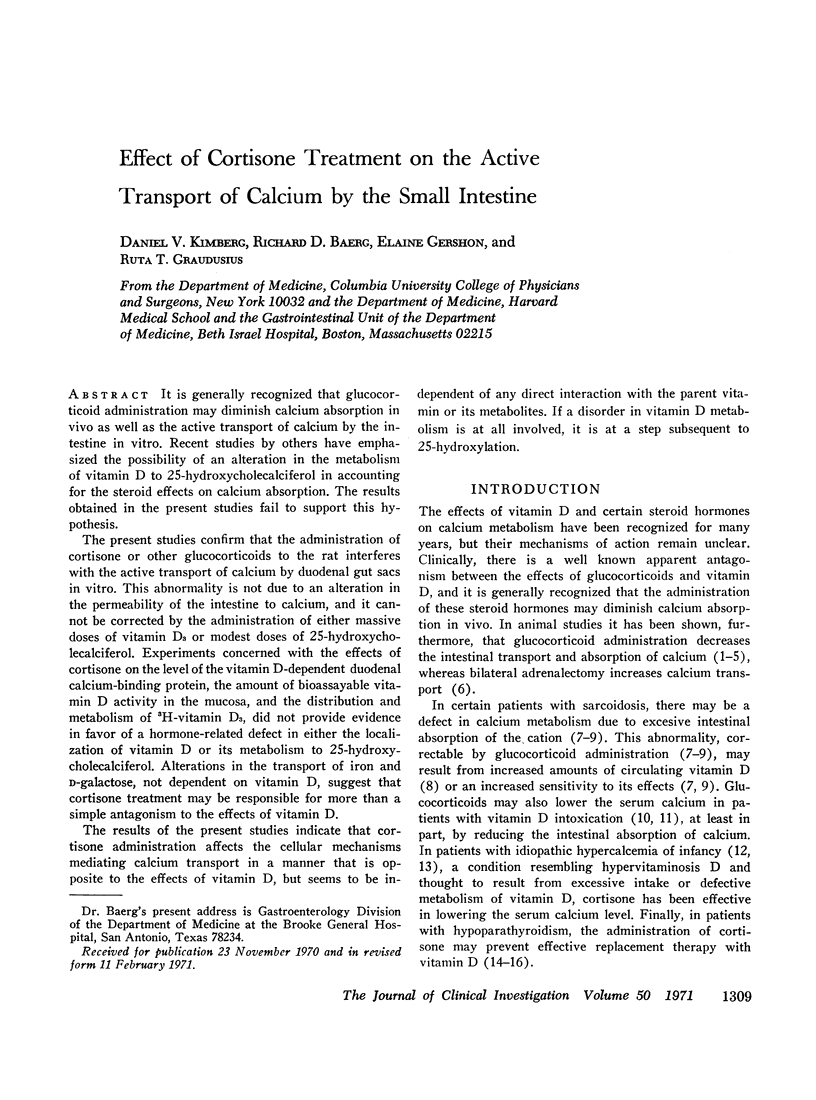
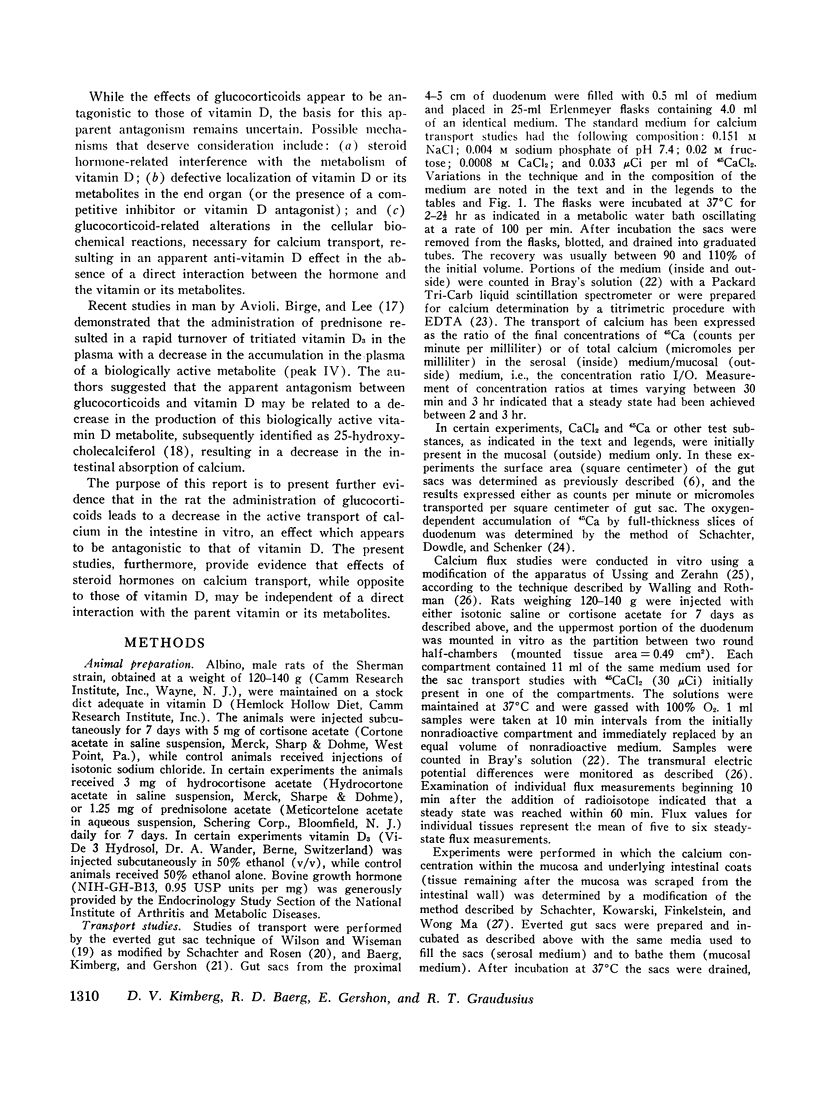
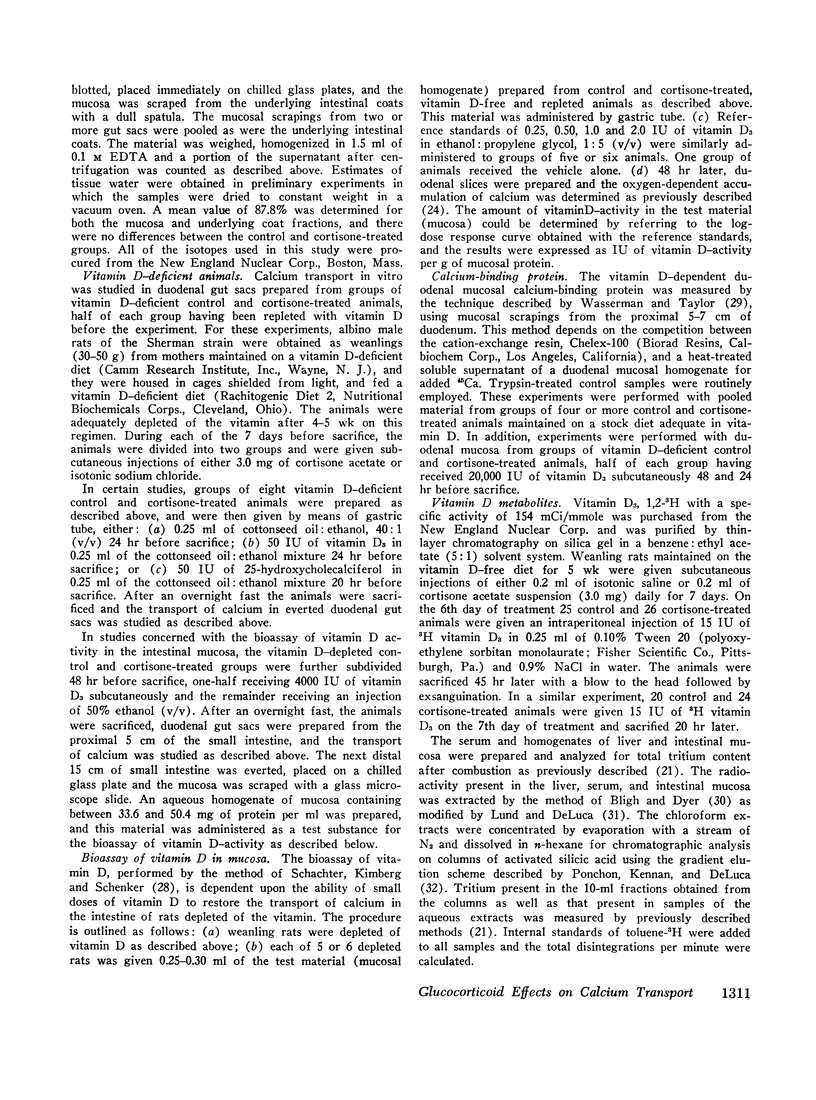
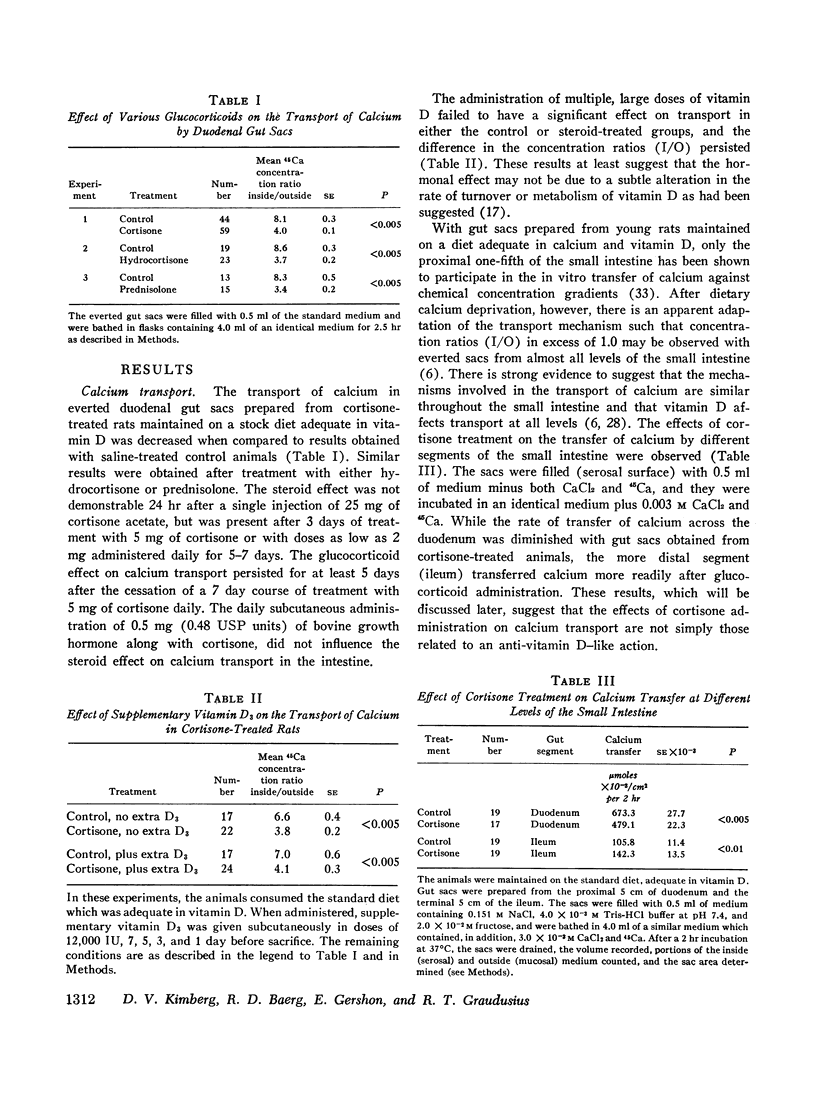
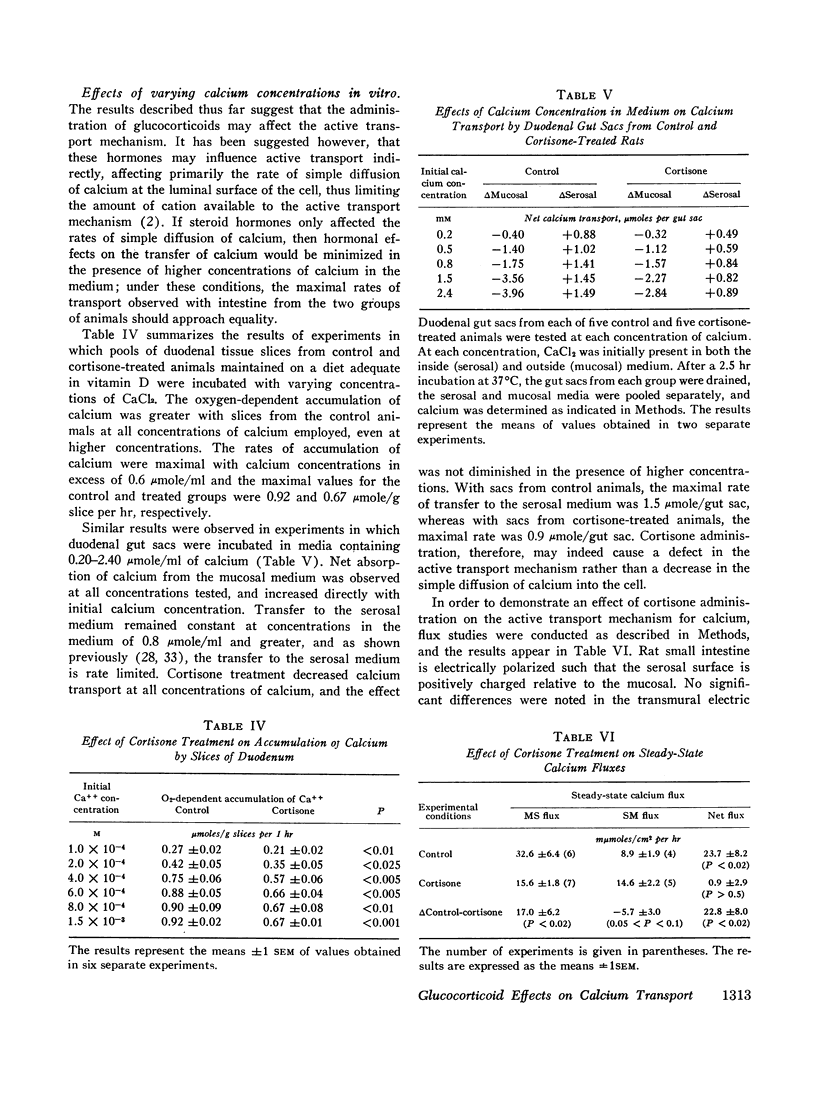
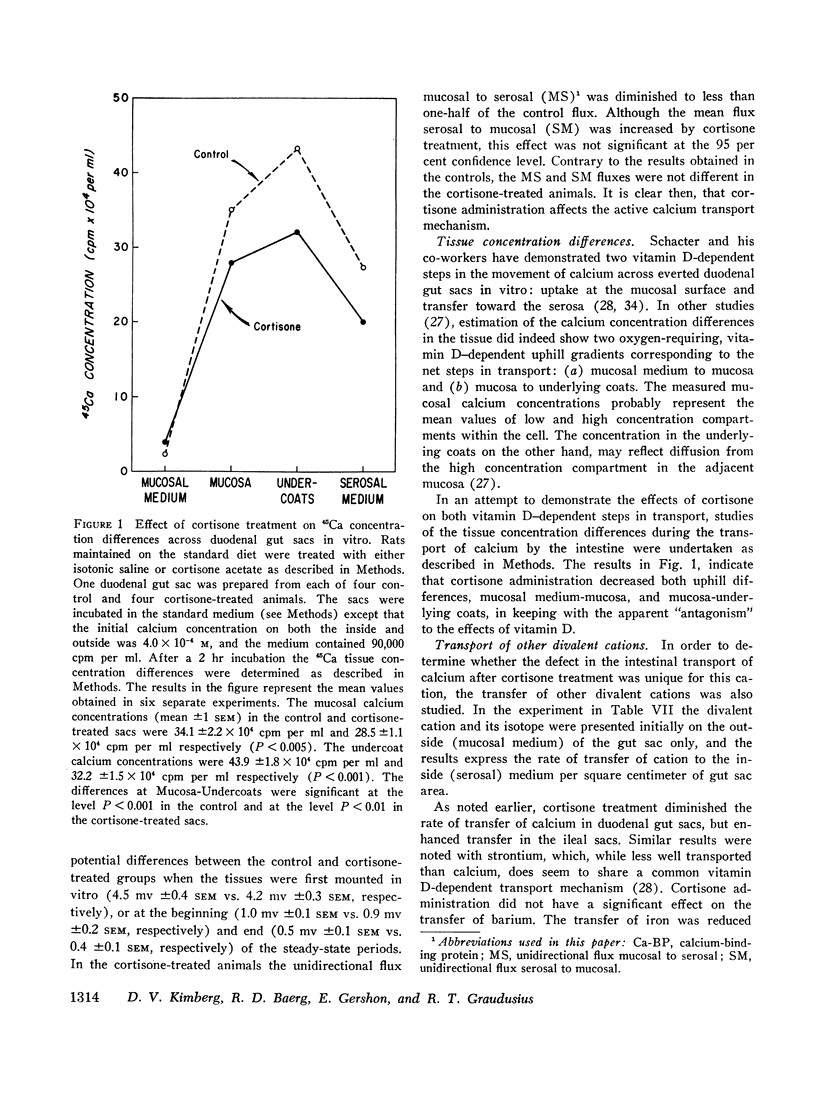
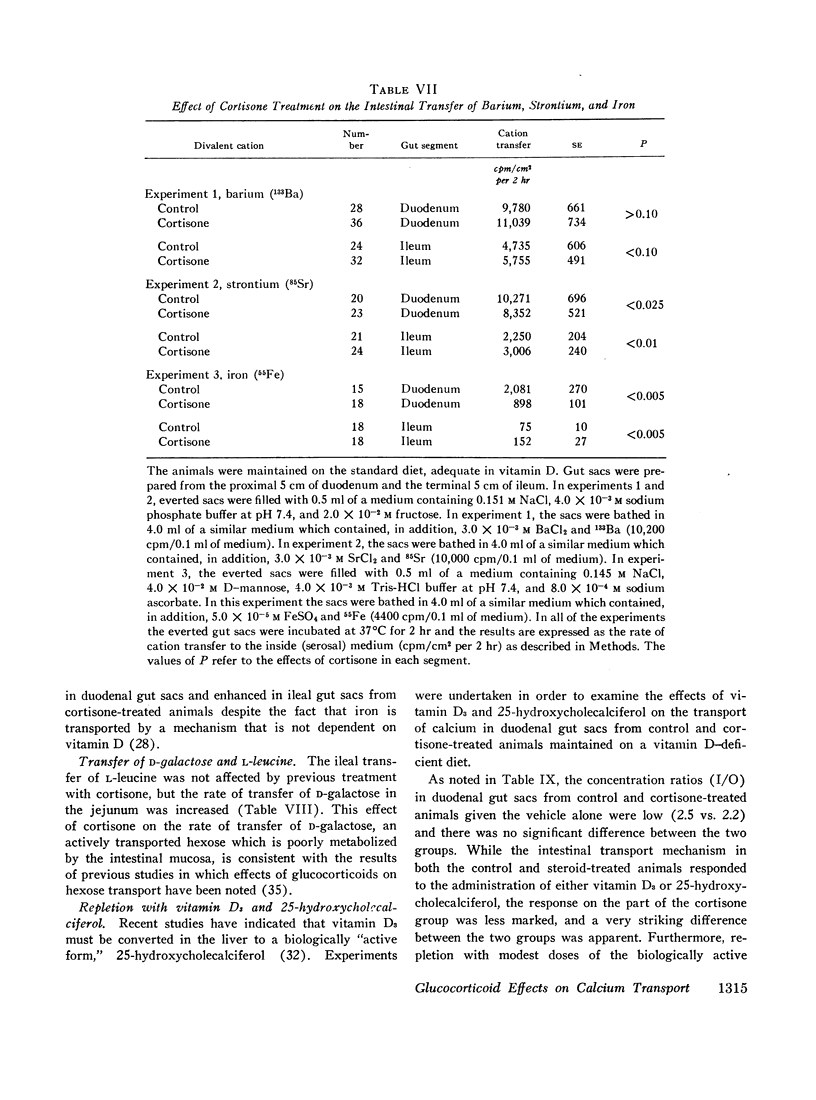
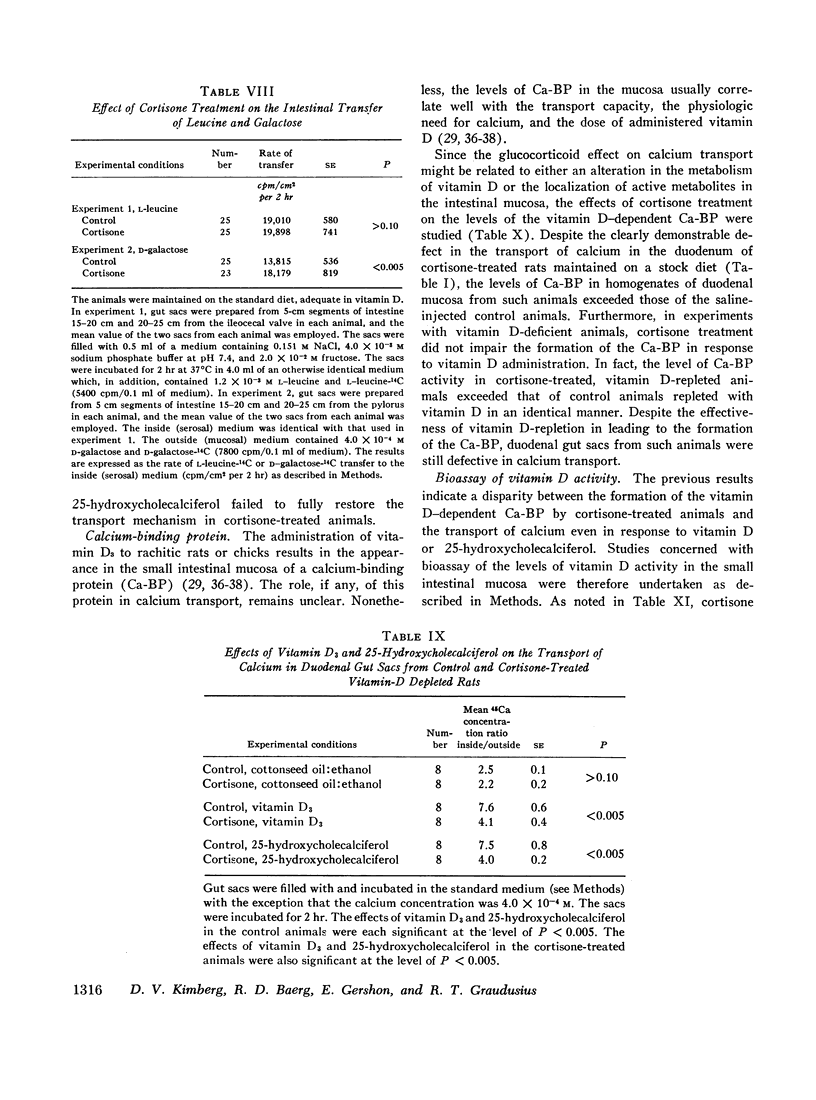
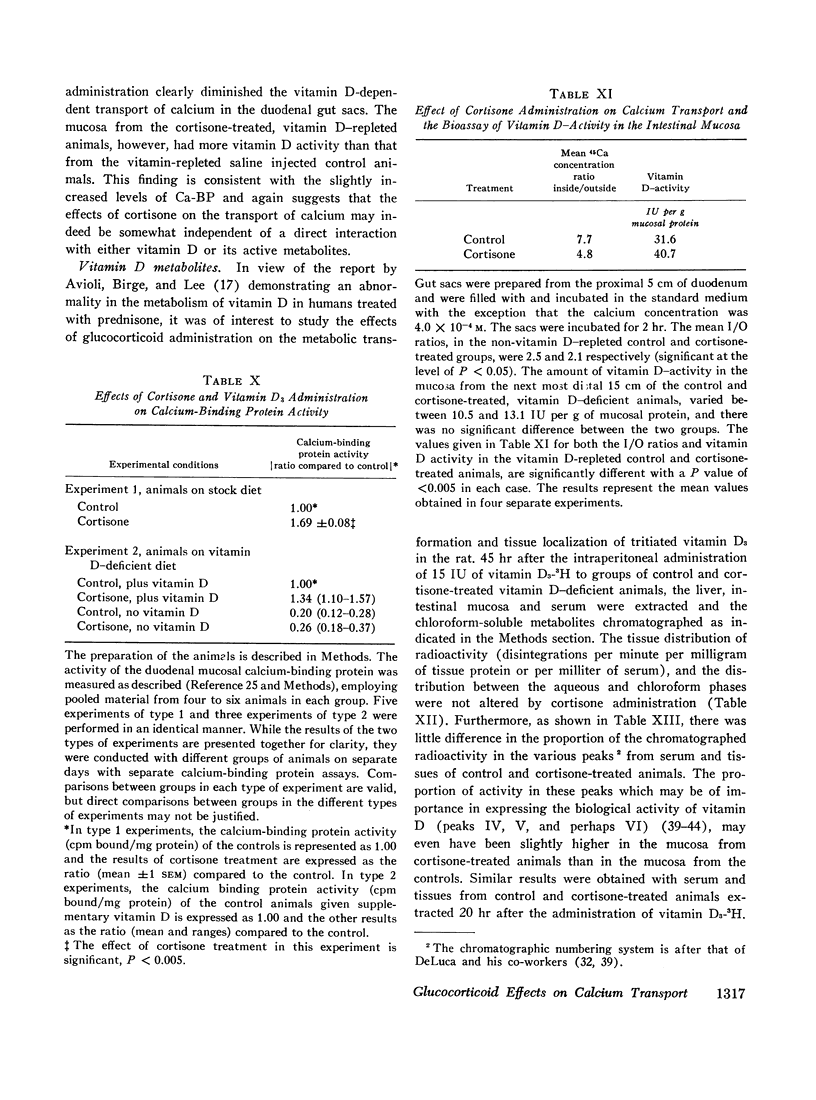
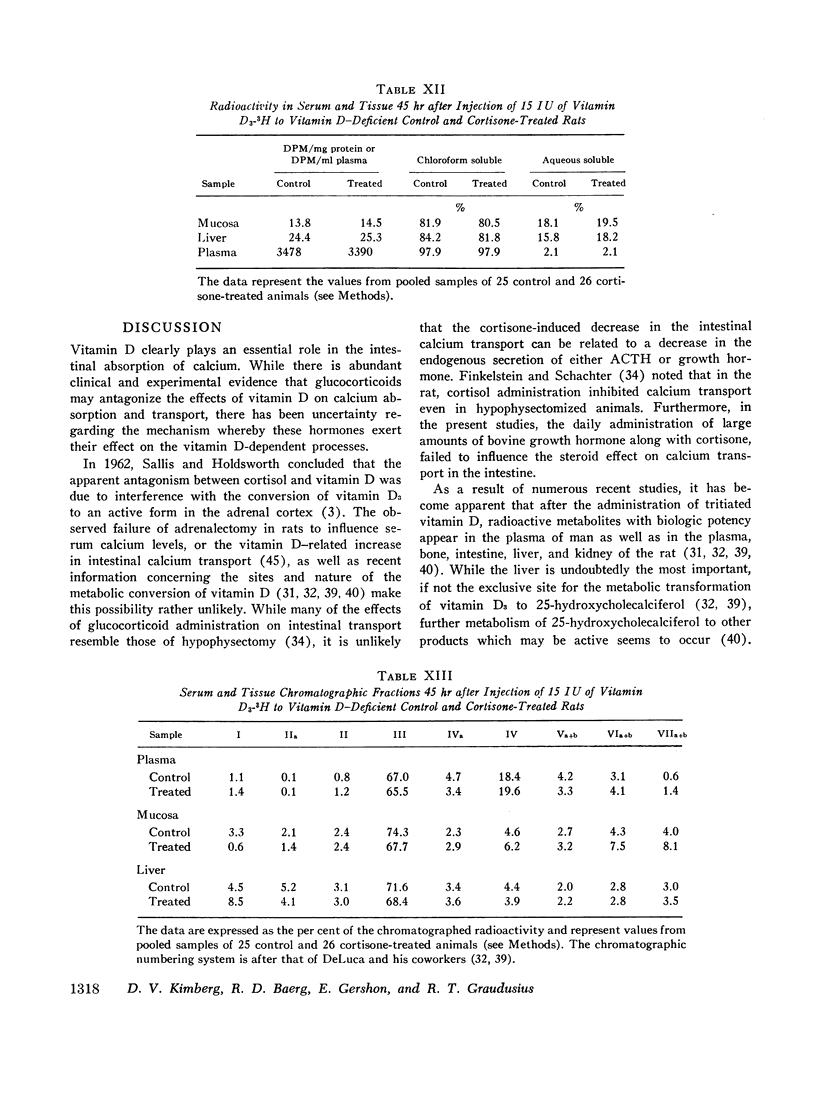

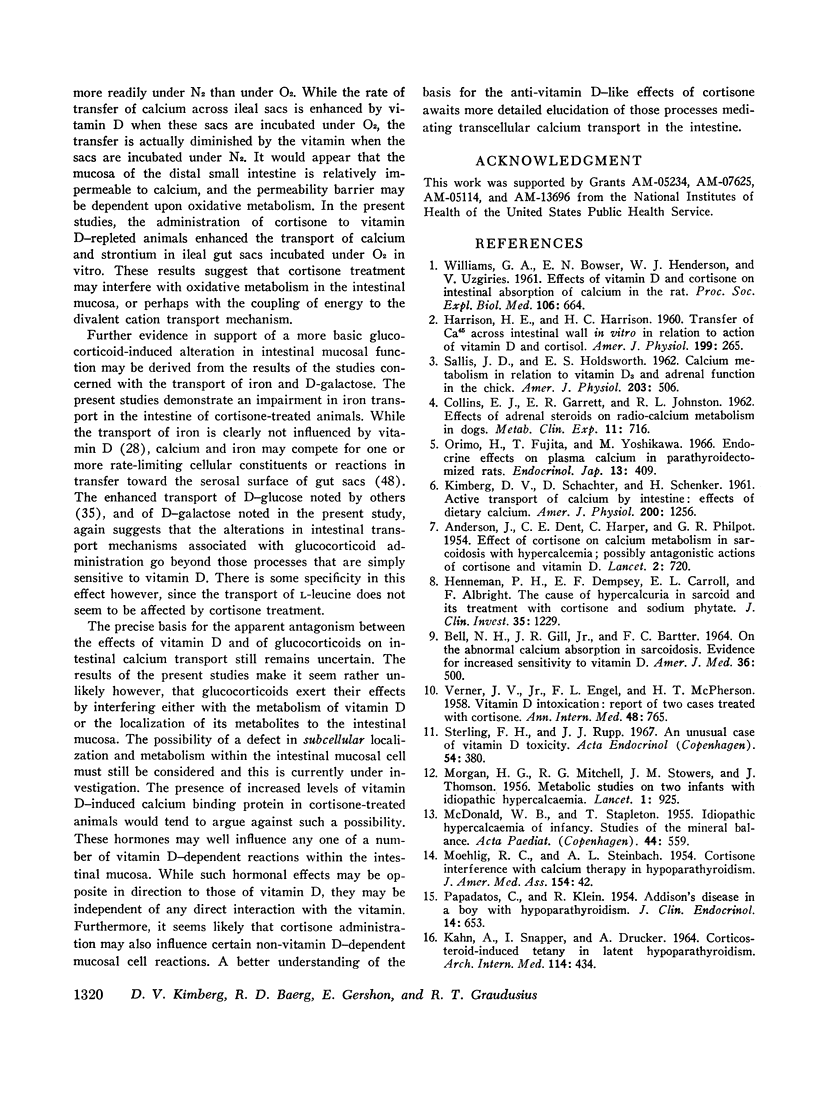
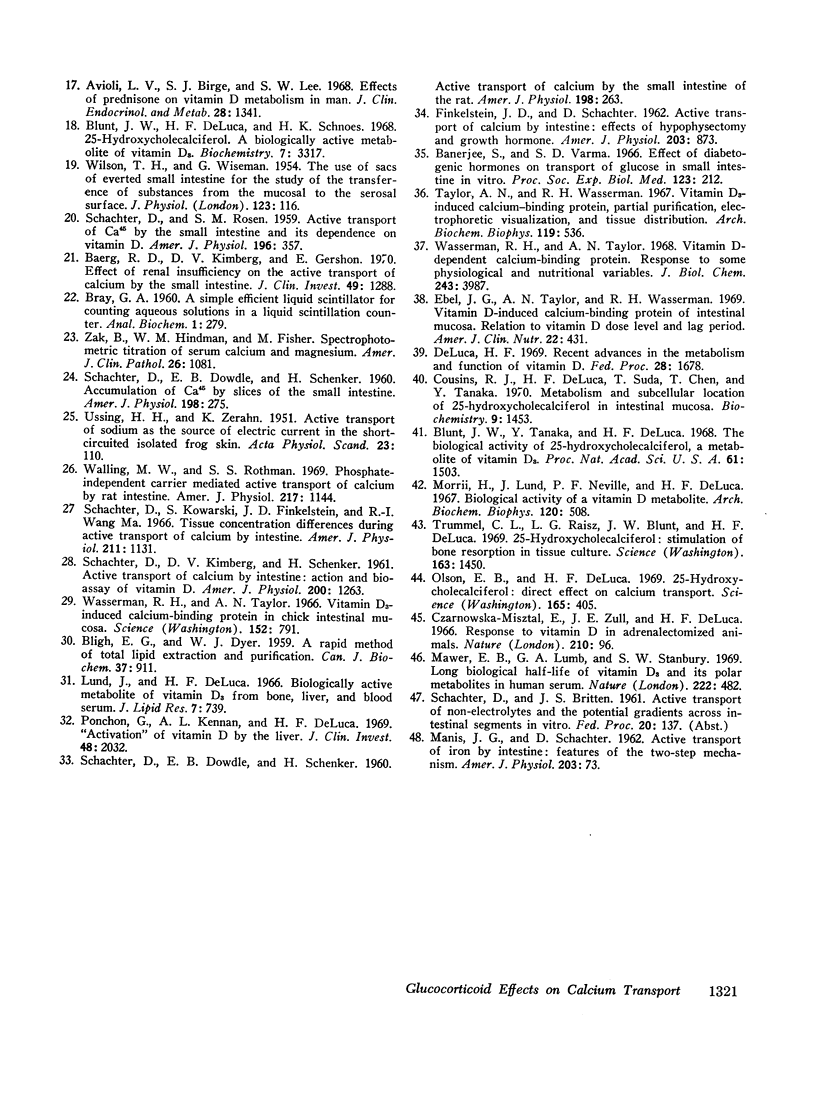
Selected References
These references are in PubMed. This may not be the complete list of references from this article.
- ANDERSON J., HARPER C., DENT C. E., PHILPOT G. R. Effect of cortisone on calcium metabolism in sarcoidosis with hypercalcaemia; possibly antagonistic actions of cortisone and vitamin D. Lancet. 1954 Oct 9;267(6841):720–724. doi: 10.1016/s0140-6736(54)90492-4. [DOI] [PubMed] [Google Scholar]
- Avioli L. V., Birge S. J., Lee S. W. Effects of prednisone on vitamin D metabolism in man. J Clin Endocrinol Metab. 1968 Sep;28(9):1341–1346. doi: 10.1210/jcem-28-9-1341. [DOI] [PubMed] [Google Scholar]
- BELL N. H., GILL J. R., Jr, BARTTER F. C. ON THE ABNORMAL CALCIUM ABSORPTION IN SARCOIDOSIS. EVIDENCE FOR INCREASED SENSITIVITY TO VITAMIN D. Am J Med. 1964 Apr;36:500–513. doi: 10.1016/0002-9343(64)90099-3. [DOI] [PubMed] [Google Scholar]
- BLIGH E. G., DYER W. J. A rapid method of total lipid extraction and purification. Can J Biochem Physiol. 1959 Aug;37(8):911–917. doi: 10.1139/o59-099. [DOI] [PubMed] [Google Scholar]
- Banerjee S., Varma S. D. Effect of diabetogenic hormones on transport of glucose in small intestine in vitro. Proc Soc Exp Biol Med. 1966 Oct;123(1):212–213. doi: 10.3181/00379727-123-31445. [DOI] [PubMed] [Google Scholar]
- Blunt J. W., DeLuca H. F., Schnoes H. K. 25-hydroxycholecalciferol. A biologically active metabolite of vitamin D3. Biochemistry. 1968 Oct;7(10):3317–3322. doi: 10.1021/bi00850a001. [DOI] [PubMed] [Google Scholar]
- Blunt J. W., Tanaka Y., DeLuca H. F. Biological activity of 25-hydroxycholecalciferol, a metabolite of vitamin D3. Proc Natl Acad Sci U S A. 1968 Dec;61(4):1503–1506. doi: 10.1073/pnas.61.4.1503. [DOI] [PMC free article] [PubMed] [Google Scholar]
- COLLINS E. J., GARRET E. R., JOHNSTON R. L. Effect of adrenal steroids on radio-calcium metabolism in dogs. Metabolism. 1962 Jul;11:716–726. [PubMed] [Google Scholar]
- DeLuca H. F. Recent advances in the metabolism and function of vitamin D. Fed Proc. 1969 Sep-Oct;28(5):1678–1689. [PubMed] [Google Scholar]
- Ebel J. G., Taylor A. N., Wasserman R. H. Vitamin D-induced calcium-binding protein of intestinal mucosa. Relation to vitamin D dose level and lag period. Am J Clin Nutr. 1969 Apr;22(4):431–436. doi: 10.1093/ajcn/22.4.431. [DOI] [PubMed] [Google Scholar]
- HARRISON H. E., HARRISON H. C. Transfer of Ca45 across intestinal wall in vitro in relation to action of vitamin D and cortisol. Am J Physiol. 1960 Aug;199:265–271. doi: 10.1152/ajplegacy.1960.199.2.265. [DOI] [PubMed] [Google Scholar]
- KAHN A., SNAPPER I., DRUCKER A. CORTICOSTEROID-INDUCED TETANY IN LATENT HYPOPARATHYROIDISM. Arch Intern Med. 1964 Sep;114:434–438. doi: 10.1001/archinte.1964.03860090168020. [DOI] [PubMed] [Google Scholar]
- KIMBERG D. V., SCHACHTER D., SCHENKER H. Active transport of calcium by intestine: effects of dietary calcium. Am J Physiol. 1961 Jun;200:1256–1262. doi: 10.1152/ajplegacy.1961.200.6.1256. [DOI] [PubMed] [Google Scholar]
- Lund J., DeLuca H. F. Biologically active metabolite of vitamin D3 from bone, liver, and blood serum. J Lipid Res. 1966 Nov;7(6):739–744. [PubMed] [Google Scholar]
- MACDONALD W. B., STAPLETON T. Idiopathic hypercalcaemia of infancy; studies of the mineral balance. Acta Paediatr. 1955 Nov;44(6):559–578. doi: 10.1111/j.1651-2227.1955.tb04283.x. [DOI] [PubMed] [Google Scholar]
- MOEHLIG R. C., STEINBACH A. L. Cortisone interference with calcium therapy in hypoparathyroidism. J Am Med Assoc. 1954 Jan 2;154(1):42–44. doi: 10.1001/jama.1954.02940350044011. [DOI] [PubMed] [Google Scholar]
- MORGAN H. G., MITCHELL R. G., STOWERS J. M., THOMSON J. Metabolic studies on two infants with idiopathic hypercalcaemia. Lancet. 1956 Jun 16;270(6929):925–931. doi: 10.1016/s0140-6736(56)91518-5. [DOI] [PubMed] [Google Scholar]
- Mawer E. B., Lumb G. A., Stanbury S. W. Long biological half-life of vitamin D3 and its polar metabolites in human serum. Nature. 1969 May 3;222(5192):482–483. doi: 10.1038/222482a0. [DOI] [PubMed] [Google Scholar]
- Olson E. B., DeLuca H. F. 25-hydroxycholecalciferol: direct effect on calcium transport. Science. 1969 Jul 25;165(3891):405–407. doi: 10.1126/science.165.3891.405. [DOI] [PubMed] [Google Scholar]
- Orimo H., Fujita T., Yoshikawa M. Endocrine effects on plasma calcium in parathyroidectomized rats. Endocrinol Jpn. 1966 Dec;13(4):409–415. doi: 10.1507/endocrj1954.13.409. [DOI] [PubMed] [Google Scholar]
- PAPADATOS C., KLEIN R. Addison's disease in a boy with hypoparathyroidism. J Clin Endocrinol Metab. 1954 Jun;14(6):653–660. doi: 10.1210/jcem-14-6-653. [DOI] [PubMed] [Google Scholar]
- Ponchon G., Kennan A. L., DeLuca H. F. "Activation" of vitamin D by the liver. J Clin Invest. 1969 Nov;48(11):2032–2037. doi: 10.1172/JCI106168. [DOI] [PMC free article] [PubMed] [Google Scholar]
- SALLIS J. D., HOLDSWORTH E. S. Calcium metabolism in relation to vitamin D and adrenal function in the chick. Am J Physiol. 1962 Sep;203:506–512. doi: 10.1152/ajplegacy.1962.203.3.506. [DOI] [PubMed] [Google Scholar]
- SCHACHTER D., DOWDLE E. B., SCHENKER H. Accumulation of Ca45 by slices of the small intestine. Am J Physiol. 1960 Feb;198:275–279. doi: 10.1152/ajplegacy.1960.198.2.275. [DOI] [PubMed] [Google Scholar]
- SCHACHTER D., DOWDLE E. B., SCHENKER H. Active transport of calcium by the small intestine of the rat. Am J Physiol. 1960 Feb;198:263–268. doi: 10.1152/ajplegacy.1960.198.2.263. [DOI] [PubMed] [Google Scholar]
- SCHACHTER D., KIMBERG D. V., SCHENKER H. Active transport of calcium by intestine: action and bio-assay of vitamin D. Am J Physiol. 1961 Jun;200:1263–1271. doi: 10.1152/ajplegacy.1961.200.6.1263. [DOI] [PubMed] [Google Scholar]
- SCHACHTER D., ROSEN S. M. Active transport of Ca45 by the small intestine and its dependence on vitamin D. Am J Physiol. 1959 Feb;196(2):357–362. doi: 10.1152/ajplegacy.1959.196.2.357. [DOI] [PubMed] [Google Scholar]
- Schachter D., Kowarski S., Finkelstein J. D., Ma R. I. Tissue concentration differences during active transport of calcium by intestine. Am J Physiol. 1966 Nov;211(5):1131–1136. doi: 10.1152/ajplegacy.1966.211.5.1131. [DOI] [PubMed] [Google Scholar]
- Sterling F. H., Rupp J. J. An unusual case of vitamin D toxicity. Acta Endocrinol (Copenh) 1967 Feb;54(2):380–384. doi: 10.1530/acta.0.0540380. [DOI] [PubMed] [Google Scholar]
- Taylor A. N., Wasserman R. H. Vitamin D3-induced calcium-binding protein: partial purification, electrophoretic visualization, and tissue distribution. Arch Biochem Biophys. 1967 Mar;119(1):536–540. doi: 10.1016/0003-9861(67)90488-2. [DOI] [PubMed] [Google Scholar]
- Trummel C. L., Raisz L. G., Blunt J. W., Deluca H. F. 25-Hydroxycholecalciferol: stimulation of bone resorption in tissue culture. Science. 1969 Mar 28;163(3874):1450–1451. doi: 10.1126/science.163.3874.1450. [DOI] [PubMed] [Google Scholar]
- USSING H. H., ZERAHN K. Active transport of sodium as the source of electric current in the short-circuited isolated frog skin. Acta Physiol Scand. 1951 Aug 25;23(2-3):110–127. doi: 10.1111/j.1748-1716.1951.tb00800.x. [DOI] [PubMed] [Google Scholar]
- VERNER J. V., Jr, ENGEL F. L., McPHERSON H. T. Vitamin D intoxication: report of two cases treated with cortisone. Ann Intern Med. 1958 Apr;48(4):765–773. doi: 10.7326/0003-4819-48-4-765. [DOI] [PubMed] [Google Scholar]
- WILLIAMS G. A., BOWSER E. N., HENDERSON W. J., UZGIRIES V. Effects of vitamin D and cortisone on intestinal absorption of calcium in the rat. Proc Soc Exp Biol Med. 1961 Mar;106:664–666. doi: 10.3181/00379727-106-26436. [DOI] [PubMed] [Google Scholar]
- WILSON T. H., WISEMAN G. The use of sacs of everted small intestine for the study of the transference of substances from the mucosal to the serosal surface. J Physiol. 1954 Jan;123(1):116–125. doi: 10.1113/jphysiol.1954.sp005036. [DOI] [PMC free article] [PubMed] [Google Scholar]
- Walling M. W., Rothman S. S. Phosphate-independent, carrier-mediated active transport of calcium by rat intestine. Am J Physiol. 1969 Oct;217(4):1144–1148. doi: 10.1152/ajplegacy.1969.217.4.1144. [DOI] [PubMed] [Google Scholar]
- Wasserman R. H., Taylor A. N. Vitamin D-dependent calcium-binding protein. Response to some physiological and nutritional variables. J Biol Chem. 1968 Jul 25;243(14):3987–3993. [PubMed] [Google Scholar]
- Wasserman R. H., Taylor A. N. Vitamin d3-induced calcium-binding protein in chick intestinal mucosa. Science. 1966 May 6;152(3723):791–793. doi: 10.1126/science.152.3723.791. [DOI] [PubMed] [Google Scholar]


